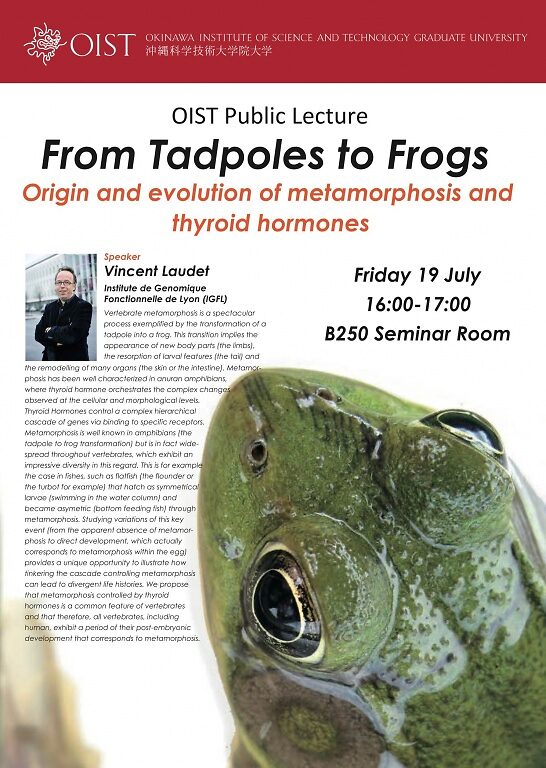"From Tadpoles to Frogs: Origin and evolution of metamorphosis and thyroid hormones" Vincent Laudet

Date
Location
Description
Vertebrate metamorphosis is a spectacular process exemplified by the transformation of a tadpole into a frog. This transition implies the appearance of new body parts (the limbs), the resorption of larval features (the tail) and the remodelling of many organs (the skin or the intestine). Metamorphosis has been well characterized in anuran amphibians, where thyroid hormone orchestrates the complex changes observed at the cellular and morphological levels. Thyroid Hormones control a complex hierarchical cascade of genes via binding to specific receptors. Metamorphosis is well known in amphibians (the tadpole to frog transformation) but is in fact widespread throughout vertebrates, which exhibit an impressive diversity in this regard. This is for example the case in fishes, such as flatfish (the flounder or the turbot for example) that hatch as symmetrical larvae (swimming in the water column) and became asymetric (bottom feeding fish) through metamorphosis. Studying variations of this key event (from the apparent absence of metamorphosis to direct development, which actually corresponds to metamorphosis within the egg) provides a unique opportunity to illustrate how tinkering the cascade controlling metamorphosis can lead to divergent life histories. We propose that metamorphosis controlled by thyroid hormones is a common feature of vertebrates and that therefore, all vertebrates, including human, exhibit a period of their post-embryonic development that corresponds to metamorphosis.
Attachments
Subscribe to the OIST Calendar: Right-click to download, then open in your calendar application.



